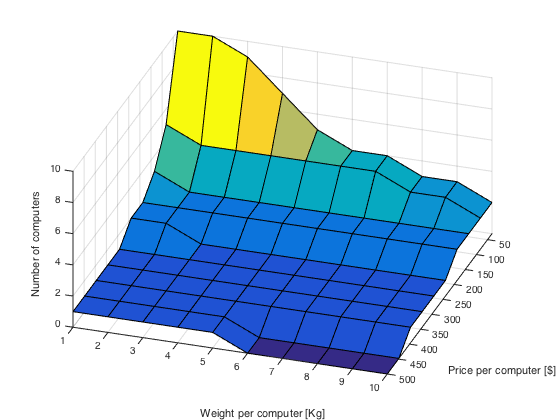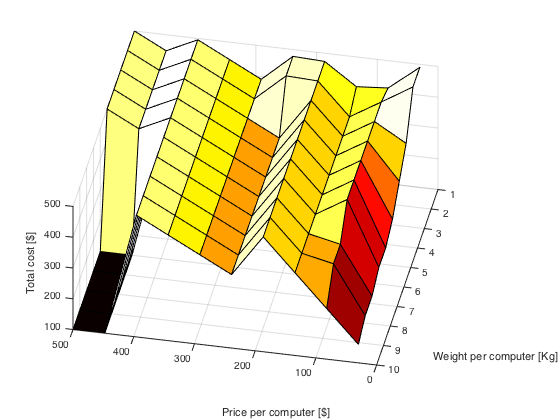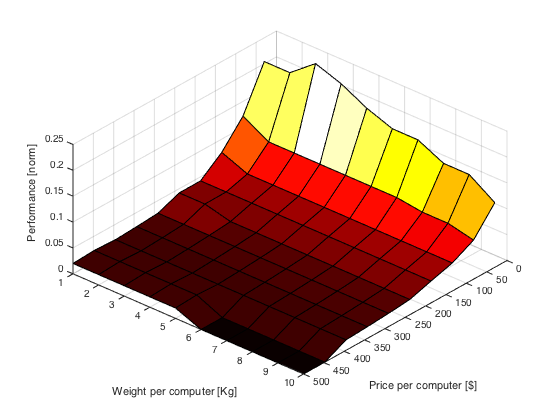We still do not have a good overview of what the total cost from buying to delivery to Malawi is, so in order to make the best objective solution we need to obtain these numbers.
Weight per computer is one of the most important ratios to consider here: personal items take out a big portion of the weight budget and it is not negotiable, so it does not leave a lot for the computers, a second baggage might be necessary, but it's expensive. Let's break it down using approximate numbers:
- Maximum budget is $500
- Maximum weight per computer is 10Kg
- The first baggage can hold up to 5Kg of computer
- Weight limit for a second baggage is 23Kg
- Second baggage costs $100
Essentially what we want are magical free computers that do not weigh anything. Of course there are volume limits as well, but they are too difficult to specify as of now.
The maximum number of computers goes like this:
Where c represents the number of computers, p the price of a computer, w the weight of a computer, B the total budget, Wp the price of an additional baggage and W1 the allowable weight using a single bag and W2 the weight allowed in an additional bag.
Another way to represent it is with a graph using the two variables: price and weight:



Now that's some sexy data. We see a peak around $50 and 3Kg, which yields about 9 computers. Weight doesn't seem to make much difference, unless the computers are really cheap. Another interesting aspect is that the maximum achievable performance is only 25% of the true maximum performance, this is due to the fact that the best price and optimal weight point are never coincident.
Let's iterate the hardware functional specifications and enter those new values. Lucky us: the potential solutions do not change.
Discussions
Become a Hackaday.io Member
Create an account to leave a comment. Already have an account? Log In.